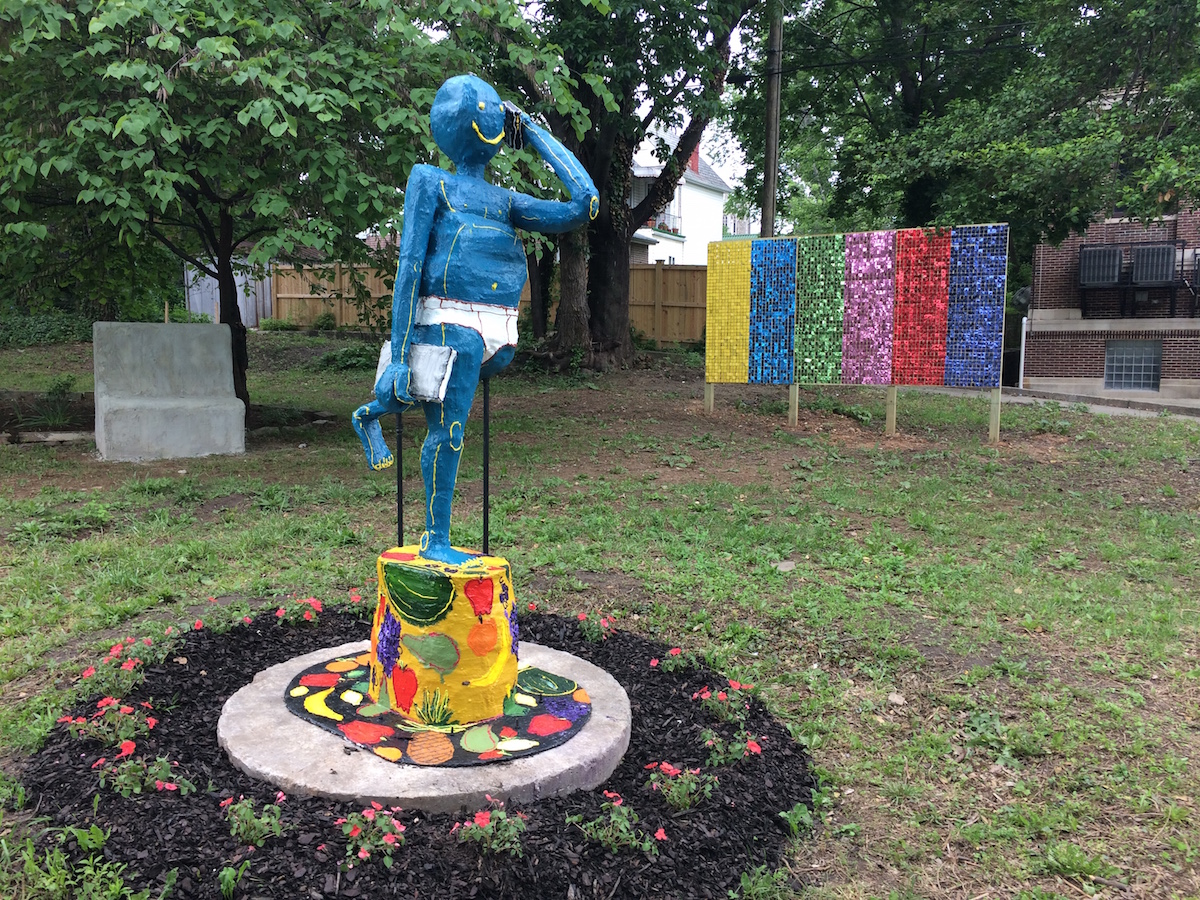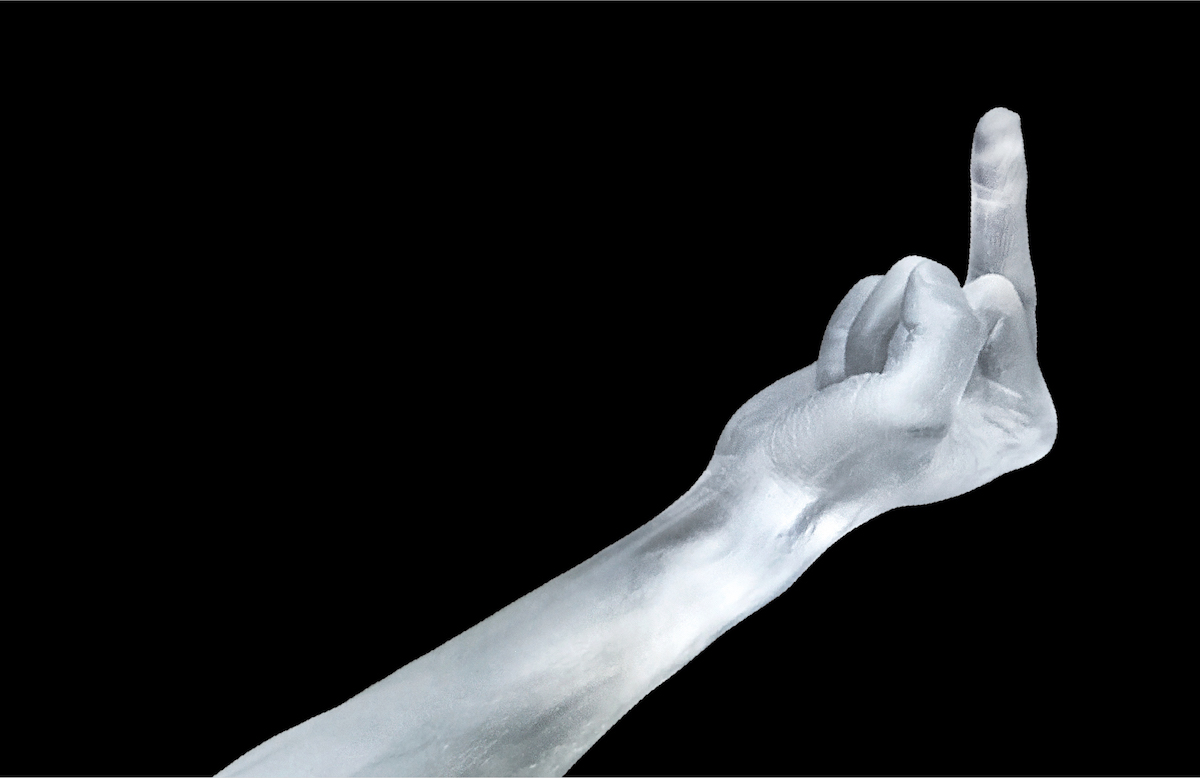An International Exhibition of Fine Art Glass by Cara Ober
Venetian glass is like Versace. You know it’s impeccably made but there’s something a little tacky about it. It’s too garish, too beautiful, too everything. There is literally nothing subtle about it. You know you shouldn’t love it, but you can’t hold back. This over-the-top aesthetic hasn’t impinged upon Versace’s ability to compete within the context of international fashion, but it has kept the medium of fine art glass way out of the center of the contemporary art world.
Venetian glass has dominated the market since the late 13th century when the republic situated the industry on the nearby island of Murano to keep its secrets intact. For centuries, they held a monopoly on crystalline glass, enameled glass (smalto), glass with threads of gold (aventurine), multicolored glass (millefiori), milk glass (lattimo), and imitation gemstones made of glass. Murano’s glassmakers became wealthy and powerful individuals but there was one catch: it was punishable by death to leave the island. Secrets made in Murano stayed in Murano. As a result, there’s a vast history of material culture in Venice that revolves around highly sophisticated and specialized glassmaking techniques.
 Gallery View from Glasstress Venice 2017
Gallery View from Glasstress Venice 2017
If you visit Venice today, you’ll notice even the tiniest apartment sports baroque glass chandeliers and sconces, and the shops sell glossy baubles. Most are downright schmaltzy, just tchotchkes and jewelry, but it’s still hard to resist touching them.
The seductive richness of Murano glass has placed it at the center of everyday living in Venice, but has kept it far outside the boundaries of legitimate contemporary art conversations—until now.
Adriano Berengo of Fondazione Berengo founded Glasstress as an international platform and studio in an attempt to combine traditional Venetian glassmaking with contemporary art. Many participating artists have never used glass before, but all come to the workshop to work with master craftspeople like Berengo and other Murano glassmaking colleagues. (Baltimore art trivia: Joyce J. Scott was featured in the 2013 Glasstress exhibit in Venice.) In 2009, Glasstress was recognized as an official ‘collateral’ event of the Venice Biennale, and has been hosted in the Palazzo Franchetti by the Grand Canal ever since.
The workshop has expanded to curate international glass exhibits with participating artists at the NY Museum of Arts and Design and currently at the Boca Raton Museum. However, situated squarely between the history of Venetian glass and the contemporary offerings at the Biennale, Glasstress forges a significant middle ground between those two mutually exclusive worlds within the most meaningful context possible.
This year’s iteration of Glasstress is a sprawling exhibition that offers a fantastic array of commentaries on culture, history, politics, and even the history of glassmaking in Venice from some of the top names of the art world. One main goal accomplished by the larger, more ambitious pieces in exhibit is the establishment of glass as a serious contemporary sculptural medium.
 Koen Vanmechelen, with Sarah Sze on balcony
Koen Vanmechelen, with Sarah Sze on balcony
In the gardens of Palazzo Franchetti flanking the canal, Belgian artist Koen Vanmechelen’s gargantuan “Protected Paradise” is an ambitious starter for the show. Scaled to draw attention from the water, from inside the garden, and from the nearby palazzo where the rest of the show is housed, the sculpture combines geometric and organic metal elements with a giant egg surrounded by large chunks of blue-green glass. The piece is heavy-handed in its symbolism – an egg that symbolizes a threatened environment – but it’s dramatic scale and rich array of materials make it fun to look at.
Karen Lamonte
Once inside the grand palazzo, an opulent setting where walls are inlaid with patterned marble and festooned with giant chandeliers, Karen Lamonte’s luminous goddess figures serve as a much more subtle introduction to the exhibit. Regal and semi-transparent, each gown renders detailed folds of cloth in loving detail. Like ancient Roman statues, each is headless, armless, and human-sized, with each of three gowned torsos offering a stunning array of intricate detail.
Made of cast glass, each figure holds a depth that an opaque material like marble or plaster never could, glowing with a rich grayish light. The glass also imbues them with a suede-like surface that you really want to touch and their sensuality enhances their feminine power. Lamonte’s goddesses would be relevant in any contemporary figurative sculptural context and don’t feel like ‘glass’ sculpture — rather, purposeful sculpture made of glass.
Dustin Yellin
Dustin Yellin’s dioramas appear to be encased in square chunks of ice displayed on top of metal bases. They offer a cascade of minute narrative details that charm like a Wes Anderson film, while a striated side view offers clues to its laborious and immaculate construction in layers. Yellin’s scenarios are brimming with theatrical drama, conflict, and activity, inviting the viewer to piece their stories together like a detective. The yummy glass surface gleams and offers a preciousness and also a distinctive weight to each piece.
Tony Ousler in Glasstress Venice from Bmoreart on Vimeo.
Tony Oursler offers a contemporary video piece that has been embedded into colorful glass shapes. Hung on the wall like a mosaic television, a human face blinks and whispers nonsensical positive thinking mantras in a sultry female voice. The combination of video and glass is weird, but somehow cohesive too. The addition of a video piece in an exhibit of sculpture adds a contemporary context to the show and is a testament to the versatility of the medium.
Not only are the works beautiful precisely because of their materiality, they advance a conversation about the purpose of beauty and our prejudice against certain art media; they question the boundaries of art within the context of material culture and make a case for glass as a legitimate sculptural material, rather than a kitsch or decorative element.
There are a number of works in this exhibit that use irony to challenge the boundaries of aesthetic discrimination against glass, offering objects that are deliberately tacky or crass, and addressing contradictions about high vs. low art. Many are humorous, and their aesthetically beautiful appearance intensifies their satire.
 Erwin Wurm
Erwin Wurm
What could be funnier than a giant glass hot dog with arms and legs? Irony abounds in Erwin Wurm’s work, like “Venetian Sausage Small,” where absurd objects become glowing personas of injected blown glass. Wurm’s works directly parody the ego and purpose of the artist as fragile weenie or empty vessel. After the initial joke has worn off, there isn’t much left to chew on, but Wurm’s pieces are still intensely likable from a formal aesthetic perspective.
These works by the artist currently representing Austria at the Giardini, where participants can stick their body parts through holes in a camper, brim with a similar offbeat humor but also offer a preciousness and monumentality directly translated from the glass medium. In Glasstress, all of Wurm’s elements come together to intensify their own ridiculousness and it’s a treat to encounter well-made art that doesn’t take itself too seriously.
 Paul McCarthy
Paul McCarthy
Paul McCarthy’s “Glass Trees,” a play on the title, manage to bridge the gap between naughty joke and magnetic object. For those who have no idea what a butt plug looks like, these objects’ size, color, surface, and vaguely totemic shape imbues them with visual power and they’re easily digestible object candy. Once you realize that McCarthy is monumentalizing sex toys in glass, they take on a wicked humor and also a proud political stance on sexual liberty, challenging prudish morals and the laws that govern most of the world.
 Xenia Hausner
Xenia Hausner
Xenia Hausner’s “Market of the Dead” features common pop objects rendered as lifesize glass cartoons. Displayed like store merchandise together on a table, Hausner’s objects—a boombox, a basketball, traffic cone—offer an absurdist commentary on consumer culture, but also elevate the common objects to a cult status.
Sarah Sze
Many of the more memorable works in the show move wholeheartedly into a political direction. Some, like Sarah Sze’s “Cotissi,” offer a critique of culture through a medium typically reserved for decorative froufrou by breaking it into jagged shards to impede movement. Sze’s piece is a simple trail of green broken glass embedded around the periphery of the palazzo’s balcony and it’s so subtle it appears to be an accident. Although I admire the artist’s consistence in placing the glass shards all the way around the giant palazzo, its critique feels haphazard.
Is it critiquing the building itself and the wealth it represents? Also, the shards are embedded inelegantly in what appears to be cement. There’s an initial ‘ouch’ reaction, but all the piece actually does is prevent one from leaning on the balcony.
 Josepha Gasch-Muche, two works at far right
Josepha Gasch-Muche, two works at far right
Like Sze, Josepha Gasch-Muche transformed broken glass into a razor sharp object, but with smoother integration into a recognizeable form. From a distance, “T. 30/12/07” appears to be a soft, even fuzzy geometric cubic form. However, up close it’s covered with a feathery surface of broken glass shards. It’s beautiful enough to entice the desire to touch it, but this object is highly dangerous and functions as a metaphor for the inherent conflicts within human ingenuity and creation.
 Ai Weiwei
Ai Weiwei
Other, more successful critical works transform glass from within its context as wealthy embellishment, and sneak it into beautiful things that seduce and then inform. Ai Weiwei’s “Blossom Chandelier” bursts with white flowers that yield surprising objects at their ends: security cameras, handcuffs, flowers, twitter birds, and human hands brandishing the middle finger. Not only is it the only chandelier project in the entire exhibition, which seems strangely prescient, considering their ubiquity in Venice and that every room in Palazzo Franchetti boasts gaudy chandeliers, but Weiwei’s political rant is economically poetic.
It is both angry and contemporary, which is probably why Glasstress used one of his smaller sculptures, a white glass arm flipping the bird, on all promotional materials. I feel like I’m not supposed to like this piece because Ai Weiwei takes political issues and translates them into pop iconography, but this precision generates a powerful punch.
 Ai Weiwei
Ai Weiwei
Although there are a number of sharp, beautiful, funny, and political works in this year’s Glasstress Venice 2017 exhibition, its context next to the official biennale invites both purposeful and unwanted comparisons. It’s an ambitious show, and it features many of the same artists who have been featured in past years in the Giardini, but its separateness from the larger show feels incidental and peripheral at times.
While it is possible to elevate a historic medium so transparent, so ubiquitous to everyday life, and so intrinsically lovely that even the tiniest Venetian glass tchotchke functions as a talisman, until a contemporary artist–perhaps the ‘glass hotdog’ Erwin Wurm imagined in his work–dominates the international market with glass as their primary medium, this intensely specialized material will continue to be seen as an experimental side project.
Glasstress successfully posits historic fine art glass as a worthy and significant medium for contemporary artists to use, both formally and metaphorically, and certainly attests to Berengo’s ability to translate contemporary ideas into their specialized medium. The exhibit proves that this achievement is possible and in a robust fashion, but also makes it transparent that the rest of the art world is not quite there yet.
 “Alar” by Shirazeh Houshiary
“Alar” by Shirazeh Houshiary
*******
Author Cara Ober is founding editor at BmoreArt.
Glasstress Venice 2017 includes works by: Ai Weiwei (China), Charles Avery (UK), Dike Blair (USA), Graham Fagen (UK), Gaia Fugazza (Italy), Abdulnasser Gharem (Saudi Arabia), Loris Gréaud (France), Xenia Hausner (Austria), Siggi Hofer (Italy), Halim Al-Karim (Iraq), Brigitte Kowanz (Austria), Karen LaMonte (USA), Paul McCarthy (USA), Haroon Mirza (UK), Laure Prouvost (France), Monira Al-Qadiri (Kuwait), Ugo Rondinone (Switzerland), Markus Schinwald (Austria), Sarah Sze (USA), Sabine Wiedenhofer (Austria), Dustin Yellin (USA), Monica Bonvicini (Italy), Tony Cragg (UK), Erin Dickson (UK), Jan Fabre (Belgium), Josepha Gasch-Muche (Germany), Shirazeh Houshiary (Iran), Alicja Kwade (Poland), Vik Muniz (Brazil), Jaume Plensa (Spain), Thomas Schütte (Germany), Koen Vanmechelen (Belgium), Erwin Wurm (Austria).

Glasstress is open to the public from 11 May to 26 November 2017, at Palazzo Franchetti, San Marco 2847 daily 10.00 am – 6.30 pm.
Photos by Cara Ober, Sherri Fisher, Kelly Zimmerman with install images courtesy of Glasstress.












